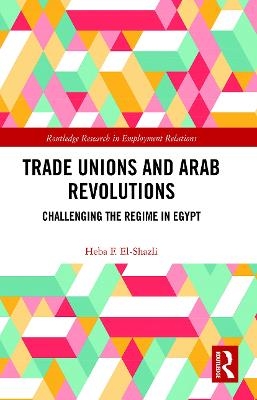
Trade Unions and Arab Revolutions
Routledge (Verlag)
978-0-367-78629-8 (ISBN)
This book examines the combative role of Egyptian independent workers’ formal and informal organizations as a contentious social movement to challenge the regime. It will examine the evolving role of workers as socio-economic actors and then as political actors in very political transitions. Social movement theory (SMT) and its mechanisms and social movement unionism (SMU) will be the lenses through which this research will be presented. The methodology used will be the comparative case studies of two different movements where workers who advocated for their rights for a decade prior to January 2011 experienced significantly differing outcomes. One case study showcases the municipal real estate tax collection workers who were able to establish a successful social movement and then create an independent trade union. The second case study examines an influential group of garment and textile workers, who also developed an effective social movement, yet they were not able to take it to the next step to establish an independent union. I will explore within this research a second question: why one group of workers was able to establish an independent union while the other arguably more influential group of workers, the garment and textile workers, was not able to do so. This had an impact on the overall influence they were able to exercise over the regime in addition to their effectiveness as a social movement for change.
Heba F. El-Shazli is an Assistant Professor at George Mason University’s Schar School of Policy and Government, where she teaches undergraduate and graduate courses on International Relations Theory; Politics, Government and Society of the Middle East; Israeli-Palestinian Politics; and Islam and Politics. She is an affiliate faculty to the Ali Vural Ak Center for Global Islamic Studies (AVACGIS) at George Mason University. She is also an Adjunct Faculty at Georgetown University’s Master’s Degree Program at the Center for Democracy and Civil Society.
Acknowledgements
Preface
Introduction – An Elusive Victory: how Egyptian workers challenged the regime, and the rise of the protest movement
Part I – A brief overview of Egyptian workers’ revolts and history
Chapter 1. The Historic Rise of Organized Labor and its role in protest democratic movements globally; and Egyptian Workers’ Contentious Collective Action
Chapter 2. An Overview of The Egyptian Labor Movement’s History (Pre- and Post-1952) and the Shaping of the Current Labor Movement: the nature of political conflict, contenting elite factions and the institutional basis of political power
Part II – The Two Case Studies; Other Workers’ Protests, and Socio-Economic and Cultural Framing
Chapter 3. First Case Study – The Municipal Real Estate Tax Collectors
Chapter 4. Second Case Study - The Garment & Textile workers at the Misr Company for Spinning and Weaving in El-Mahalla al-Kubra
Chapter 5. Other Workers’ Protests and how their repertoire mirrored the protests of larger unions and worker groups
Chapter 6. The Cultural Framing: Socio-economic, political and cultural changes in Egypt leading up to the January 2011 Uprising
Part III – Conclusion
Chapter 7. The Hope for a Democratic Transition: Post January 2011 Uprising and the Role of the Independent Labor Movement Leading to the May 2012 Elections and Beyond
Chapter 8. Concluding remarks and Epilogue: Political, Economic and Social Developments from 2012 to 2018
Appendix A: The Municipal Real Estate Tax Collectors Case Study Supporting Letters and Documents
Appendix B: Examples of Other Significant Protests by Egyptian Workers
Author Biography
Bibliography
Index
| Erscheinungsdatum | 06.04.2021 |
|---|---|
| Reihe/Serie | Routledge Research in Employment Relations |
| Verlagsort | London |
| Sprache | englisch |
| Maße | 152 x 229 mm |
| Gewicht | 353 g |
| Themenwelt | Sozialwissenschaften ► Politik / Verwaltung |
| ISBN-10 | 0-367-78629-X / 036778629X |
| ISBN-13 | 978-0-367-78629-8 / 9780367786298 |
| Zustand | Neuware |
| Informationen gemäß Produktsicherheitsverordnung (GPSR) | |
| Haben Sie eine Frage zum Produkt? |
aus dem Bereich


